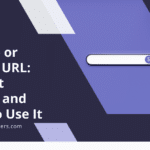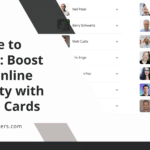
|
Getting your Trinity Audio player ready...
|
If you’re looking to strengthen your digital footprint, Google People Card might be your new favorite tool. Designed to help individuals establish an online presence, this virtual business card highlights your professional details directly on Google search. Now, when someone types in your name, they’ll find a concise profile featuring your bio, social links, and contact details—all in one place.
Whether you’re a freelancer, entrepreneur, influencer, or job seeker, the Google People Card provides an unmatched opportunity to boost personal branding and credibility. Here’s everything you need to know about this feature, its benefits, and how to make it work for you.
What Is a Google People Card?
Launched in 2020, the Google People Card is essentially your digital calling card on the world’s largest search engine. Think of it as LinkedIn meets Google profiles.
It gives individuals the power to manage how they appear on search results, offering important information such as your job title, bio, website, and social media handles. Currently, the feature is available in select countries, including India, Kenya, Nigeria, and South Africa.
While Google My Business (GMB) caters to companies and Google Knowledge Panels are typically reserved for public figures, People Cards are all about empowering individuals to showcase their personal brand.
Availability of Google People Card
Countries Where It’s Available
- India
- Kenya
- Nigeria
- South Africa
Why Limited Availability?
Google People Card is still in its experimental stages. The limited release helps Google fine-tune the tool and minimize spam issues before a global rollout. Eligibility is determined by location and account settings, meaning users in supported regions might be able to access this feature immediately.
Benefits of Google People Card
1. Personal Branding & SEO
- Boosts visibility on Google by displaying your information prominently in search results.
- Establishes a verified online presence, making it easier for people to find authentic information about you.
2. For Freelancers & Entrepreneurs
- Builds credibility by showcasing your professional details and achievements.
- Acts as an easy access point for potential clients to get in touch.
3. For Job Seekers & Influencers
- Serves as a mini online portfolio for employers or collaborators.
- Helps brands assess your digital reach and expertise with linked social profiles.
How to Create a Google People Card
Step-by-Step Guide to Creating Your Google People Card
- Log in to Your Google Account
Ensure you’re signed in to the Google account you want associated with your People Card. This account will be used to manage and display your information.
- Search for “Add Me to Search”
Open Google Search and type “Add me to Search.” This will prompt you to create your People Card if the feature is available in your location.
- Fill in Your Details
You’ll be directed to a form where you can add information such as:
- Name (as you want it to appear publicly)
- Occupation/Profession
- Location (optional but recommended)
- Bio (a short description of who you are)
- Website (if applicable)
- Social Media Profiles (e.g., LinkedIn, Twitter, Instagram)
- Email Address (for contact)
The more details you include, the better optimized your card will be for search visibility.
- Preview and Publish
Once you’ve filled out your details, preview your card to ensure everything appears correctly. After confirming, click the “Save” button to publish it.
- Verify Your Information
To prevent spam or fake profiles, Google may require you to complete a verification process, such as confirming your phone number. Finish this step to make your card live.
- Keep It Updated
Regularly review and update your People Card to reflect any changes to your personal or professional information. Keeping your card current ensures its accuracy and usefulness.
Tips for Optimizing Your Google People Card
- Use Keywords
Incorporate relevant keywords in your bio and job title to increase your card’s searchability.
- Add a Professional Photo
A clear and professional profile picture helps establish trust and enhances your personal brand.
- Keep It Concise
Your card should present information clearly and succinctly. Avoid overloading it with unnecessary details.
- Link Respected Profiles
Include links to social media accounts and websites that reinforce your credibility, such as LinkedIn or a professional portfolio.
By following these steps and tips, you can maximize the impact of your Google People Card and create a strong digital presence that works in your favor.
Requirements to Get Started
- An active Google account.
- A mobile device (desktop users won’t see this feature).
- Search location set to a country where People Cards are available.
Step-by-Step Process
- Search for “Add me to Search”
- Open your mobile browser or Google Search app and type in “Add me to Search.”
- Sign in with Your Google Account
- Make sure you’re signed in with the account you’d like associated with your People Card.
- Fill in the Required Details
- Name — Use your full, recognizable name.
- Profile Picture — Upload a professional image.
- Job Title and Company — Mention your role and workplace (if applicable).
- Bio — Keep it concise (150–200 characters). Highlight relevant keywords.
- Social Links and Website — Add LinkedIn, Twitter, or any other verified profiles.
- Contact Details — Input your phone number and/or email (optional but recommended).
- Save and Publish
- Click Save. Your People Card should appear in Google search results within minutes to hours.
Best Practices for Optimizing Your Google People Card
- ✅ Use a Professional Profile Picture — First impressions count.
- ✅ Write an SEO-Friendly Bio — Include keywords likely to be searched by your audience or industry.
- ✅ Add Verified Social Accounts — Boost credibility and ensure authenticity.
- ✅ Keep Details Updated — Regularly refresh your card to stay current.
- ✅ Avoid Fake Information — Misleading content may result in card removal by Google.
How to Edit or Remove Your Google People Card
How to Edit or Remove Your Google People Card
Editing or removing your Google People Card is a straightforward process. Whether you want to update your details or no longer wish to have a card, the steps are easy to follow.
Editing Your People Card
- Search “Edit my People Card”
- Using your mobile device, type “Edit my People Card” in the Google search bar. Alternatively, you can search for your name and click the “Edit” option directly on your People Card.
- Update Information
- Make necessary changes to your name, profile picture, bio, or any other section of your card.
- Ensure all updates adhere to Google’s content policies to prevent removal.
- Save Changes
- Once you’re done, click “Save” to publish the updated card. Please note that updates may take some time to reflect in search results.
Removing Your People Card
- Access Your Card Settings
- Follow the same steps used for editing by searching “Edit my People Card” or finding the “Edit” option on your card.
- Select the Remove Option
- Scroll to the bottom of the editing interface and choose the option to delete your card.
- Confirm Deletion
- Confirm your choice, ensuring the card is permanently removed. Once deleted, your information will no longer appear in Google’s search results.
Removing your People Card doesn’t lock you out of creating one again in the future. Should you wish to reactivate your digital business card, simply follow the creation process outlined above.
Common Issues & Troubleshooting

While the Google People Card is a user-friendly tool, some issues may arise during setup or use. Below are common problems and solutions.
1. Card Not Showing in Search Results
- Cause: It may take several hours for updates or a new card to appear in Google search results.
- Solution: Be patient and ensure all required fields are completed. Also, verify that you’re signed in to the correct Google account.
2. Information Missing or Incorrect
- Cause: This could result from incomplete details or outdated information.
- Solution: Edit your card and double-check for any errors. Make sure your profile links and contact information are accurate.
3. Card Removed by Google
- Cause: Violations of Google’s content policies, including fake or misleading information.
- Solution: Review Google policies and recreate your People Card with accurate, verifiable details.
4. Feature Not Available
- Cause: People Cards are currently limited to specific countries.
- Solution: Ensure you are in one of the supported regions or change your account’s search location settings to match a supported country.
By addressing these concerns, you can get the most out of your Google People Card and maintain an effective online presence.
Editing Your Card
- Search for “Edit my People Card” on Google.
- Click the edit option to update your details.
- Save changes to reflect them on your card.
Deleting Your Card
- Search “Delete my People Card.”
- Confirm deletion by clicking the prompt.
- Your card will be permanently removed from Google Search.
Common Issues & Troubleshooting
5. Difficulty Verifying Social Links
- Cause: Your social links may not be properly verified or recognized by Google.
- Solution: Ensure that the social media accounts you add to your card are public and properly linked. Use the official URLs of your profiles to prevent verification issues.
6. Incorrect Display of Profile Picture
- Cause: This may occur if the image doesn’t meet Google’s specifications or is incorrectly uploaded.
- Solution: Use a high-quality image in standard formats like JPG or PNG. Follow Google’s guidelines for profile picture dimensions and re-upload the image.
Best Practices to Avoid Issues
To minimize issues with your People Card, always follow best practices for creating and maintaining your digital presence. Make sure all the information is accurate, professional, and regularly updated. Additionally, adhere to Google’s policies for appropriate content to ensure the card remains active and visible in search results. By staying proactive, you can maximize the usefulness of your People Card while maintaining a polished online presence.
Why Is My Google People Card Not Showing?
- The card might still be indexing.
- You’re searching from a region where the card isn’t supported.
- Google flagged the card as spam or duplicate.
Potential Fixes
- Check that your Google account is set to a supported country.
- Clear your browser cache and search preferences.
- Locate your card in incognito mode to verify visibility.
Google People Card vs Other Online Branding Tools
|
Feature |
Google People Card |
Google My Business |
LinkedIn Profile |
Personal Website |
|---|---|---|---|---|
|
Free to Use |
✅ Yes |
✅ Yes |
✅ Yes |
❌ No |
|
Visible in Search |
✅ Yes |
✅ Yes |
❌ No |
✅ Yes |
|
Social Links Included |
✅ Yes |
❌ No |
✅ Yes |
✅ Yes |
|
Suitable for Businesses |
❌ No |
✅ Yes |
✅ Yes |
✅ Yes |
Although tools like LinkedIn and personal websites are powerful, a Google People Card provides a seamless entry point for anyone searching directly for you.
Will Google People Card Expand Globally?
It’s likely just a matter of time. While current availability covers only a few regions, Google could eventually introduce People Cards worldwide, contingent on refining privacy concerns and spam controls.
FAQs
- Is Google People Card free?
Yes, it’s completely free.
- How long does it take to appear in results?
Usually within minutes, but it can take up to a few hours.
- Can I add business information?
No, People Cards are intended for individuals only.
Boost Your Digital Presence with Google People Card
If you’re eligible, setting up a Google People Card is a no-brainer. It’s fast, simple, and cost-effective, giving you a professional edge in today’s competitive digital landscape. Set up your People Card today and make your mark in the online world.

























































